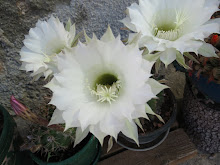One of these weeds is definitely greater celandine also known as tetterwort, (Chelidonium maius).
Chelidonium (family Papaveraceae) can grow from 30 cm to 80 cm. It’s mostly found in areas which are not farmed or in ruins, besides fences and paths, and its’ main characteristic is yellow orange juice which starts to leak if you squeeze this plant.

Chelidonium is very contradictor herb because it’s very therapeutic and poison in the same time.
In some past times, Chelidonium was used as cure for leukemia (combined with nettle and elder sprouts) because it cleans blood and helps in generating blood.
Greater celandine is diuretic and purgative aid (lightens your digestion) and it is recommended to people suffering from rheumatic and gout. It helps with problems with asthma, insomnia, chronic bronchitis and convulsion in some parts of body.
Chelidonium is very successful in treating kidney disease, lever diseases and gall diseases (it dissolves gall stones).
It improves eyesight and various eye illnesses. Warm compress made of green part of Chelidonium helps with stomach ache and sexual organs, and we put the herb directly on our stomach it will chase away worms.
Chelidonium is mostly recommended for outer usage because it helps with skin cancer (it is highly recommended in treating skin cancer) diseases, callus, skin tags and eczema.
The most common way to use Chelidonium is to squeeze its’ fresh juice and use it directly on your skin.
You must be very careful with Chelidonium because it can be very poisoned if you take this herb without precaution.
Despite to some of its’ bad characteristics, don’t miss this unique and very useful herb – there are not much information about it, but I’ll try to add some benefits for it in future post because I noticed Chelidonium around me in many different places, all I need to do now is to find the time and pick it up and trying its’ curative and therapeutic features on me.

6 comments :
I do not recall seeing this weed or I may have seen it and just never noticed it. It is funny how some of the weeds we neglect can be used in treating certain diseases. We take so many things around us for granted.
Thank you very much comment - I agree with you when you say we take everything for granted. We often forget that many cures and benefits come from nature.
Yuck..i always try to get as far as possible from this thing..i dont like the smell...in fact i dont like any herb smell at all..haaiiihhzzzzz.... any cure for this?
It's called "svalört" (swallowwart) in my language and was formerly believed efficacious in removing warts and in restoring failing eyesight. It was used by so called "witches" hundreds of years ago. However, those witches were killed over the course of the 17th century. Well, that's a much longer story.
@ Dav DiDi - thank you for your comment, but I'm sure I understood your question? Sneezing? Allergic?
@ Karin - Thank you very much for sharing your information about Chelidonium, I'm happy to finally know the English expression for it - and yes, I found similar data about its' benefits for eye sight.
Nice find and write up, I never knew about this herb.
Post a Comment